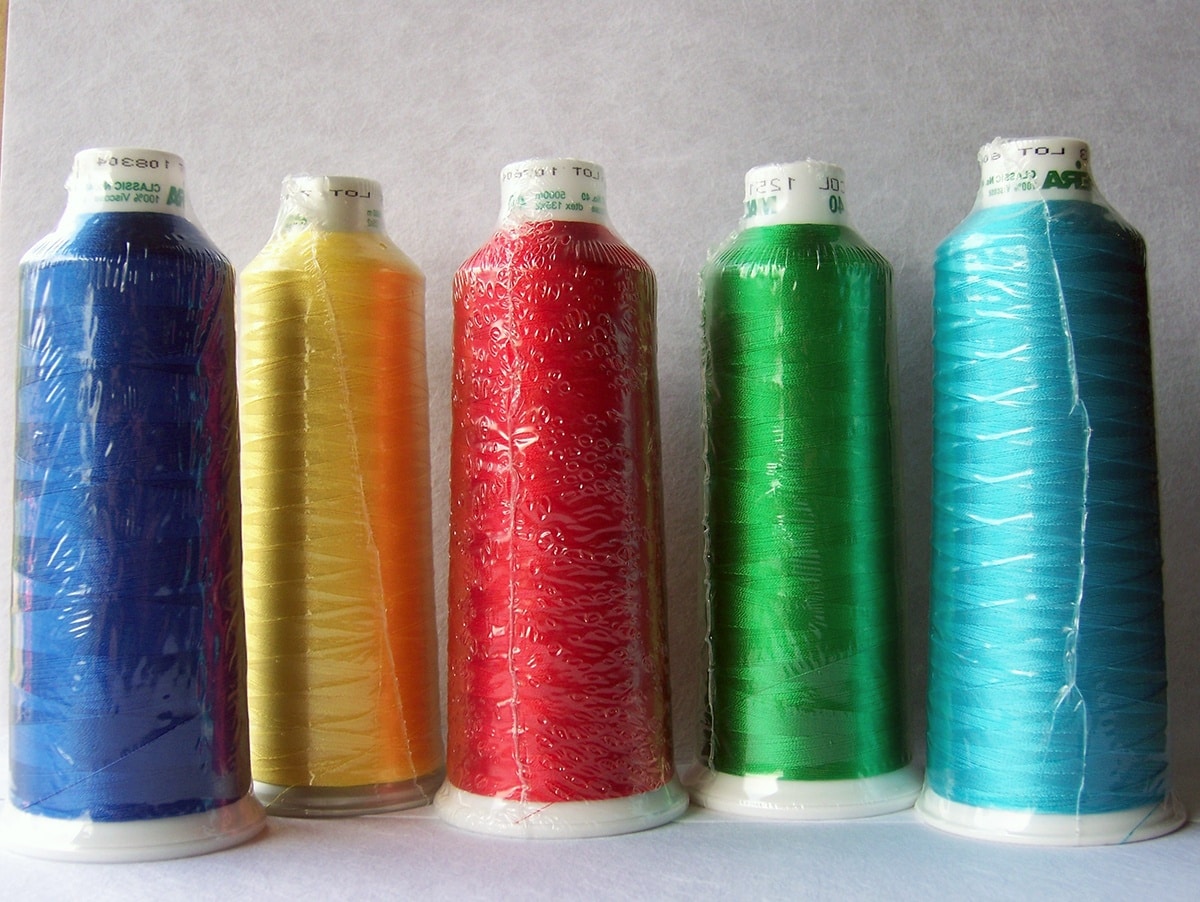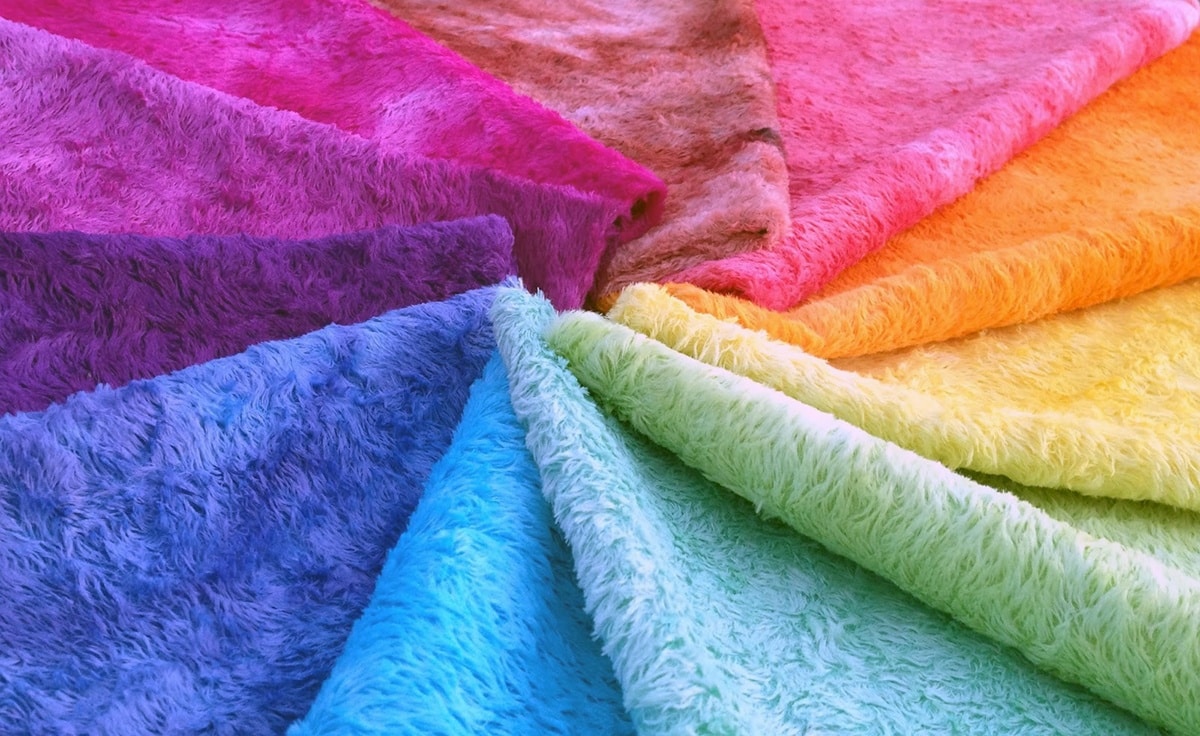Buying new sheets but can’t decide if you want to choose a viscose or rayon set? We’ve got you covered! We’ll break down the similarities, differences, pros, and cons of each fabric below.
The first thing to know is that viscose and rayon are actually the same kind of fabric. Viscose rayon (or viscose) just goes through a different manufacturing process than standard rayon. As a result, the fabrics feel slightly different. Keep reading to learn more.
What Is Viscose Fabric?
Viscose fabric is a type of rayon that is made with an organic liquid called viscose. It feels similar to rayon but has a more silky look.
What Is Viscose Fabric Made of?
Viscose is made of either wood pulp or cotton linter. Popular wood types are eucalyptus, pine, and beech. Manufacturers soak the pulp or cotton in liquid viscose and then shred it. Viscose is also used to make cellophane and artificial silk. After the pulp and viscose is combined, it goes through the manufacturing process to become viscose fabric.

Is Viscose a Natural Fiber?
Viscose is made of wood pulp (or wood cellulose), which is a natural fiber. But viscose production does involve chemical treatment, so it is not totally natural or totally synthetic. Many manufacturers call it a semi-synthetic fiber.
How Is Viscose Made?
Viscose is made by putting wood pulp into a caustic soda containing viscose, carbon disulfide, and sodium hydroxide. After the raw material is treated and washed, it is retreated to create fibers. These regenerated cellulose fibers are used to create viscose fabric. The viscose process creates a semi-synthetic fabric that feels like cotton but looks like silk.
Viscose Fabric Pros and Cons
Like many things, viscose has some good qualities and some negative ones. Check out the chart below for the full scoop.
| Pros | Cons |
| Viscose is lightweight and breathable, which makes it a great summer fabric for people who want silk sheets but need a cheaper alternative. | It wrinkles easily and may shrink or weaken when it is washed |
| Viscose also drapes well and feels soft and comfortable, which makes it a great choice for combining with other fabric types. | Viscose is not very eco-friendly. It can contribute to deforestation and uses a lot of water in the manufacturing process. Try to look for viscose sourced from sustainable forests if you’re an environmentally-conscious shopper. |
What Is Rayon Fabric?
Rayon is a popular fabric made from cellulose. It is often made with wood pulp from trees or bamboo. It drapes well, is highly absorbent, and feels super soft.
What Is Rayon Fabric Made of?
Rayon fabric is made of wood pulp that is turned into cellulose. Eucalyptus, spruce, and pine, and bamboo are popular woods to turn into rayon. In fact, bamboo rayon is a very popular sheet fabric.

Is Rayon a Natural Fiber?
Like viscose, Rayon is a semi-synthetic fabric. It goes through a chemical process during manufacturing but is made of natural wood pulp.
How Is Rayon Made?
Rayon is made of regenerated cellulose (a substance found in plant cell walls). Plants are mechanically pulped, and then that pulp is chemically liquified. After that, the liquid is respun into fabric that becomes rayon. It may be combined with fabrics like lyocell or bamboo to create a softer feel.
Pros and Cons of Rayon
Now, let’s take a thorough look at the pros and cons of rayon.
| Pros | Cons |
| Rayon is breathable and soft. It’s a great choice for folks looking for a cheaper alternative to pure bamboo sheets. | It is not very eco-friendly. It is made like viscose, so it uses a lot of water and wood. Consider opting for rayon sheets blended with fast growing bamboo fibers for a more eco-friendly option. |
| Rayon blends very well with bamboo, Tencel, and cotton, so you can enjoy the benefits of these fabrics without overspending. |
Rayon fibers are exposed to toxic chemicals during the production process (though those have all been washed out by the time your sheets get to you). Interested in a more natural option? Check out our best organic sheets roundup. |
Viscose vs Rayon: Which Should You Choose?
Viscose and rayon are extremely similar. Viscose is just a type of rayon after all. In fact, you might not notice much of a difference between these two fabrics unless they are blended with something else. We compared viscose and rayon’s main similarities and differences in the lists below.
Top Similarities
- Both viscose and rayon are extremely cooling. Interested in moisture-wicking or cooling bedding? Check out our best cooling sheets roundup.
- Both fabrics are easy to dye, making them great choices for sleepers looking for vivid colors or patterns.
- Neither fabric is very durable, and if you don’t get a rayon or viscose blend, your sheets may be hand-wash only. Luckily, both fabrics blend well with other fibers. So, if you’re worried about care and durability, choose a rayon or viscose blend.
- Both fabrics are inexpensive, making them good picks for luxury shoppers.
- Neither fabric is eco-friendly. If you’re looking for organic or sustainable sheets, consider bamboo bedding.
Key Differences
- Viscose looks more like silk and has a shinier sheen than Rayon.
- Traditional rayon looks more like cotton but feels more like silk. This means it is a little more breathable and absorbent than viscose.
- Viscose will keep you warm when it’s cold and cool when it’s hot. Rayon will keep you ultra-cool, but it is not thermal regulating.
- The fabrics are manufactured differently. Viscose is made specifically with liquid viscose, while rayon is not.
|
Who Should Choose Viscose? |
Who Should Choose Rayon? |
|
People looking for a lustrous, silky sheen. |
People who prefer a matte look. |
|
Those who want ultra-soft sheets. Rayon and viscose are both very soft, but viscose is just a tad softer. |
Sleepers who prefer a super cooling fabric that feels like silk. |
|
Sleepers who want to avoid shrinking or wrinkling their sheets. Viscose and rayon both wrinkle and shrink easily, but viscose will stay wrinkle-free for longer. |
Those who want a slightly more durable sheet set. Rayon is still delicate, but it is a little stronger than Viscose. |
FAQs
For more info, read on!
Is rayon or viscose better for the summer?
Both fabrics are great for hot weather. But rayon might feel just a little more breathable than viscose. We recommend opting for a bamboo viscose or bamboo rayon sheet set to truly prepare for the summer months.
Which is more breathable – rayon or viscose?
Both fabrics are highly breathable. Rayon might feel slightly more breathable than viscose.
Does rayon shrink?
Yes, rayon is likely to shrink in the wash. We recommend finding a rayon sheet set blended with linen or bamboo fabric to help prevent shrinking.
Does viscose shrink?
Yes, viscose is likely to shrink in the wash. We recommend finding a viscose sheet set blended with linen or bamboo fabric to help prevent shrinking.
Does rayon wrinkle?
Yes, rayon is prone to wrinkling. If you like a wrinkle-free look, consider a rayon blend fabric instead.

